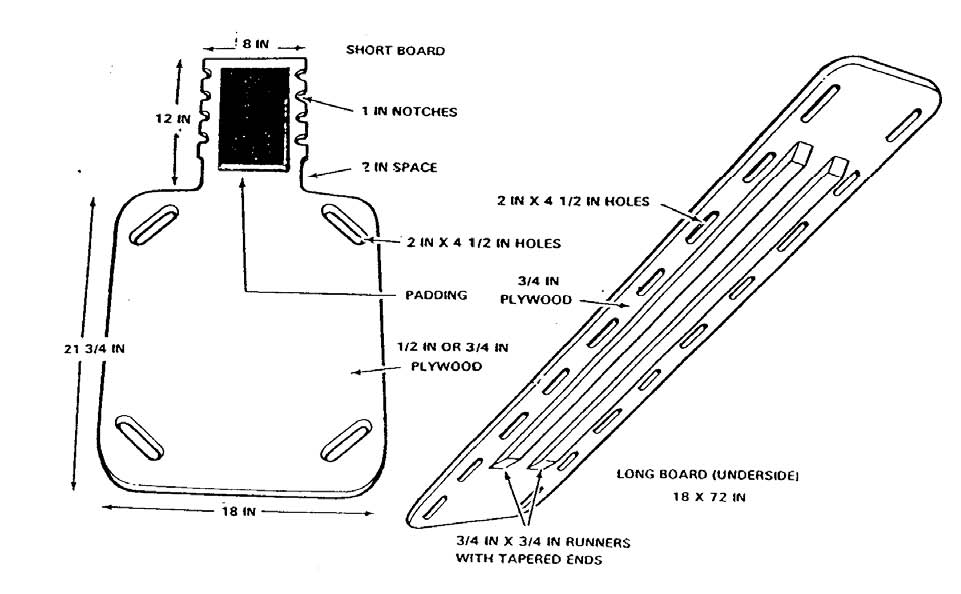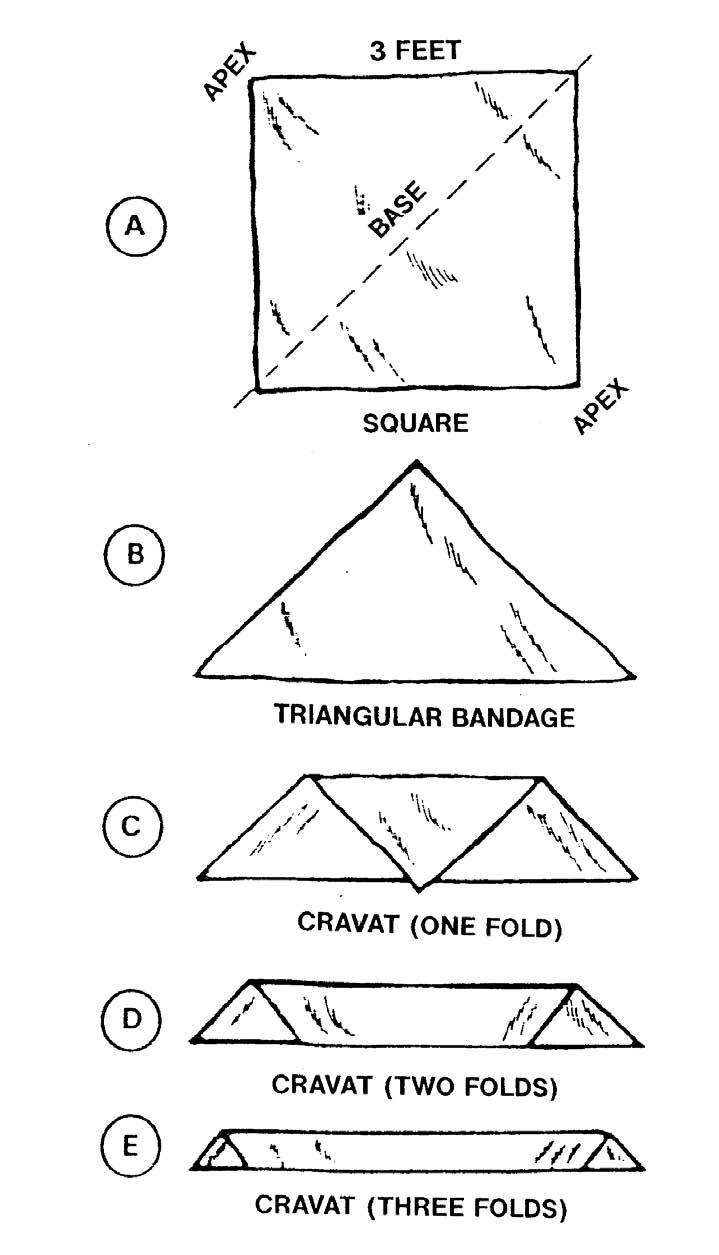Treating Fractures in the Field
Lesson 2: Spinal
Injuries
Section I: General
2-4
2-4. SPINE BOARDS
After making sure the casualty is breathing and all severe bleeding has been controlled, you must immobilize the casualty's spine. This is normally accomplished using a long spine board or a short spine board (see figure 2-2). If spine boards are not available, use a door, wide plank, or other flat, rigid materials to immobilize the casualty's spine. A standard litter can be used, but a more rigid surface is preferred. Cravats or similar materials are used to secure the casualty to the spine board. The spine board allows the casualty to be evacuated with a minimum of spinal movement.
Figure 2-2. Short (left) and long (right) spine boards.
a. Long Spine Board. The long spine board is a combination litter, body splint, and rescue (extrication) device commonly used with casualties suspected of having spinal or pelvic injuries. A long spine board is usually made from 3/4-inch exterior plywood that has been sanded and varnished. The board usually measures about 18 inches in width and about 72 inches in length. Hand holes (which are also used for straps) are cut out along each side. Two parallel runners are attached lengthwise underneath the board. The runners permit easy sliding of the spine board and lift the board off the ground slightly to permit easy grasping of the hand holes. The ends of the board are rounded, beveled, and tapered to make it easier to slide the board beneath the casualty. Accessories normally include four 6-foot straps used to secure the casualty to the board, padding materials, and several cravats. The long spine board can also be placed beneath a casualty if cardiopulmonary resuscitation (CPR) is needed while the casualty is being transported on a litter. The board provides a firm surface for performing cardiac compressions.
b. Short Spine Board. The short spine board is used to immobilize the casualty's upper body. It is normally used when the casualty is extricated while in a sitting position or when a long spine board cannot be used. The short spine board is a splint and a rescue device but, unlike the long spine board, it is not a lifting device. The short spine board is normally made of 1/2-inch exterior plywood. The board is generally 18 inches wide and about 32 to 34 inches long. It is also sanded and varnished. Although it is a one-piece board, it has two sections--the body and the headpiece. The headpiece is notched along its edges and normally measures 8 inches by 12 inches. The body has strap holes cut out at each corner and measures around 18 inches by 20 inches. Accessories normally include two 6-foot straps, one cervical collar, and cravats.
c. Cravats. A cravat is a piece of folded material. Cravats are usually made from muslin bandages, but can be made from other pliable material such as a shirt or sheet. The steps for making cravats are summarized below.
(1) Cut or tear a square about three feet on each side from pliable material if a muslin bandage is not available (see figure 2-3 A).
(2) Fold the square diagonally so it is triangular in shape (see figure 2-3 A).
(3) Cut or tear along the fold to form two triangles. Each triangle, commonly called a triangular bandage, is used to make a cravat. The longest side (the diagonal along which you cut the material) is called the base. The corner opposite the base is the apex (see figure 2-3 B).
(4) Fold the apex of the triangle down until the tip of the triangle touches the base (see figure 2-3 C).
(5) Continue to fold until the cravat is the correct size, usually about two more folds (see figures 2-3 D and E).
Figure 2-3. Making a cravat.



